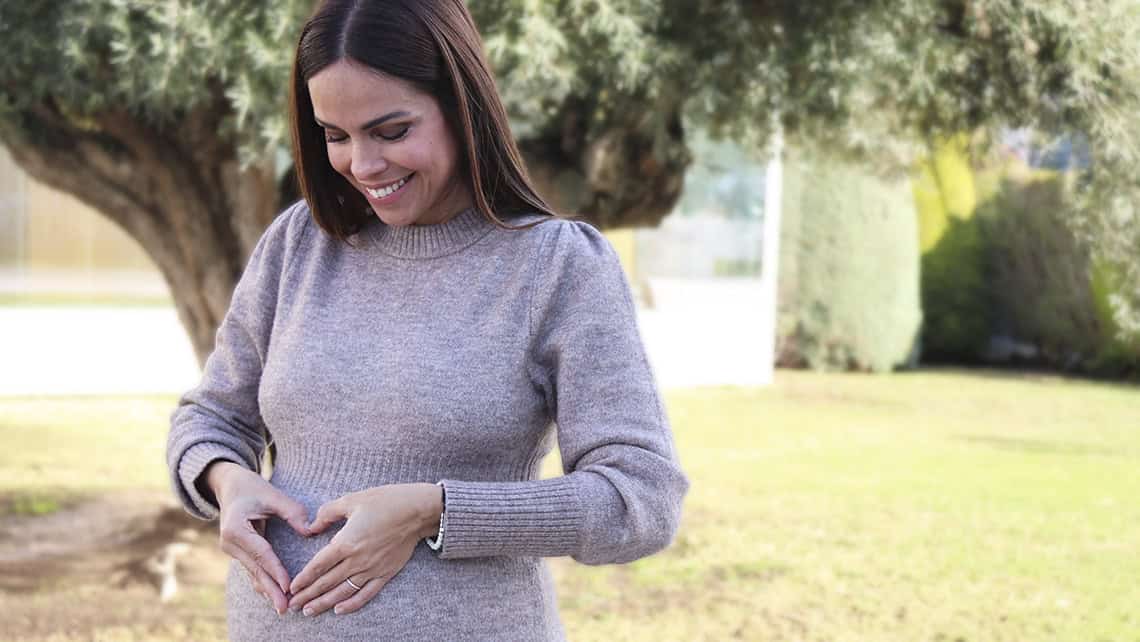Analysis of fertility in Spain: 40.1% of women are mothers after the age of 35.
June, 7th 2024

- Spain, close to become a sub-fertile country: sperm quality falls by 51%.
- At 30, a woman is half as likely to become a mother as she was 20. At 35, the chances drop drastically.
- Experts are concerned about the replacement rate: ‘it should be 2.1 children per couple and, at present, it stands at 1.15 children’.
The low birth rate and fertility problems among Spanish couples are two of the greatest threats to public health in Spain. Women are becoming mothers later and later, and 40.1% of them give birth after the age of 35, the age set by experts as the ‘fertility barrier’ after which the chances of pregnancy drop drastically. The picture does not improve from a male perspective: sperm quality drops by half and the average man’s sperm count is close to subfertility.
Difficulties in becoming a mother are increasing due to a generalised delay in motherhood that works against female biology. Currently, the average age at which Spanish women have their first baby is 32.6 years. ‘Age reduces both the quality and quantity of women’s oocytes, which leads to a decrease in their chances of becoming mothers as they get older. At 30, a woman is half as likely to become a mother as she was at 20,’ explains Dr Andrea Bernabeu, Instituto Bernabeu’s medical co-director.
In Spain, only 322,075 children were born in the whole of last year, a figure that marks historic lows and is 24.3% less than the numbers reached ten years earlier. It should be noted that births to mothers aged 35 or over have increased by 15.7% in the last decade and have gone from representing 35.1% of all births to 40.1% in 2023. Also noteworthy is the range of women giving birth after the age of 40, which in this period has grown by 18.7% and already represents 8.1% of the total number of births. The chances of naturally having children after the age of 40 are reduced to 20%.
This context means that one in five Spanish couples have problems having children. This, together with a greater generational detachment due to the creation of family nuclei, means that the population pyramid is getting older and older. ‘The replacement rate should be 2.1 children per couple, but currently stands at 1.15 children, causing an unsustainable situation affecting the entire population in the coming years,’ explains Dr Bernabeu. Spain is expected to lose 3.5 million inhabitants by 2050.
Sperm quality drop in Spain
Fertility outlook from a male perspective is also worrying. Another of the main causes threatening fertility in Spain is that both sperm quality and sperm concentration have fallen dramatically by 51% worldwide. The rate of decline is enormous: since 1973 sperm concentration has fallen at an annual rate of 1.16% and, with the turn of the century, at a rate of 2.64%.
According to WHO guidelines, a man is considered to be sub-fertile when his sperm concentration is below 40 million per millilitre and infertile when it is below 15 million per millilitre. The average obtained in the samples collected by Instituto Bernabeu indicate that the average man who attends its clinics is sub-fertile, as the average is 33.5 million spermatozoa per millilitre.
The 5,000 samples analysed in the last 5 years by the IB Group raises alarm bells by detecting an overall decrease of almost 16.75% in the count of millions per millilitre of spermatozoa; while motility has fallen by 12%. Furthermore, morphologically, a sample is considered normal when 4% of spermatozoa have a normal shape, but while in 2017 the average was 7.6% of normal spermatozoa, it is currently 3.8%, dropping by almost half.
This is replicated in sperm donations: in these 5 years the donor acceptance rate has gone from 15% to 8%. This is a fact that puts fertility experts on alert, as most donors are young people under 35 years of age, and has caused the WHO to reduce the requirements for donors.
State-of-the-art reproductive medicine
Currently, 1 in 6 children in the world are born through assisted reproduction and, in 2022, Spain surpassed 40,000 babies born through these techniques for the first time. In this sense, Spain leads the world in reproductive medicine and, every year, ‘patients from all over the world come to our clinics, attracted by the technical capacity of our teams, our success rates, Spain’s advanced legislation on assisted reproduction and the attractiveness of the destination country’, according to Dr Bernabeu.
Although profiles are diverse, the average age of the patients who come to Instituto Bernabeu’s clinics is growing year after year, and is currently 40 years old. If we take into account those who have to resort to oocyte donation treatments, the age exceeds 42.2 years.
‘There is an urgent need to raise society’s awareness of what delaying motherhood entails. It is very important we are aware of the limits we have as human beings in order to be able to consciously plan our reproductive future,’ says Dr Andrea Bernabeu, who advocates the need for increased institutional support in this regard.
